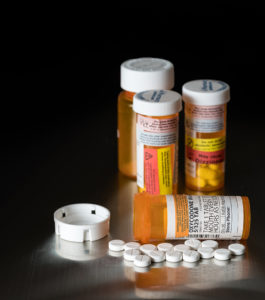
Mixing opioid painkillers with common anxiety and sleep medications is a prescription for a deadly overdose, a new U.S. study shows.
Of all fatal overdoses from narcotic medications, nearly 30 percent also involved benzodiazepines, such as Xanax, Klonopin and Valium, the researchers said.
“It’s not news that this combination is not a good one, but despite being well known, it’s gone up over time, and more people are ending up in the hospital because of it,” said lead researcher Dr. Eric Sun. “Patients and doctors really need to think twice about this combination.”
When patients take benzodiazepines along with narcotic painkillers such as Oxycontin, Percocet and Vicodin, the mix lowers the threshold for an overdose, said Sun. He is an assistant professor of anesthesiology, perioperative and pain medicine at Stanford University.
Although this study cannot prove that combining these drugs caused overdoses, the evidence is strong that this can be dangerous.
In fact, guidelines from the U.S. Centers for Disease Control and Prevention and the U.S. Food and Drug Administration warn doctors of the risks of prescribing narcotic painkillers and benzodiazepines. The guidelines also advise them to tell their patients of the potential for a narcotic overdose.
In the study, Sun and his colleagues collected data on more than 300,000 privately insured patients, aged 18 to 64, who were prescribed a narcotic painkiller between 2001 and 2013.
In 2001, 9 percent of those patients also had prescriptions for benzodiazepines. By 2013, that had increased to 17 percent—an 80 percent relative increase, the study findings showed.
Over the years, prescriptions for both narcotic painkillers and benzodiazepines have increased, so it’s not surprising that the number of patients taking both medications is up along with the number of overdoses, Sun said.
“Physicians should think carefully if they find themselves prescribing both drugs for a patient,” Sun added.
It’s also possible that some patients are getting prescriptions from different doctors who don’t know all the medications the patient is taking, he noted.
Patients should always tell their doctors what drugs they are taking, Sun said. In addition, he suggested that insurance companies can help by monitoring the drugs patients are prescribed.
“These results argue for better surveillance in order to both monitor the risk of these potentially dangerous drug combinations, and to inform patients at risk and their physicians,” he said.
Sun said he couldn’t tell from the data whether these overdoses were intentional or accidental. But he said that he does know that mixing these medications can suppress breathing, and that can send someone to the emergency room.
“It is not necessarily that patients should avoid using both drugs at the same time—after all, there may be reasons to do so—but if they are using both drugs at the same time, they should make sure their doctor is aware of it and OK with it,” Sun explained.
The report was published March 14 in the BMJ.
Pinar Karaca-Mandic is an associate professor of health policy and management at the University of Minnesota School of Public Health. She said, “This alarming trend is an important example of low-value care. Low-value care is care that is not based on evidence, potentially unnecessary and dangerous.”
Part of the problem is that warnings and guidelines don’t always make their way into practice quickly, explained Karaca-Mandic, who co-wrote an editorial that accompanied the study.
“Other groups, like health insurers, could help get this information into the hands of doctors and other prescribers,” she said.
In addition, electronic health records could be designed to flash a warning when potentially dangerous drug combinations are prescribed. Moreover, doctors should be held accountable for their prescribing, she added.
“Patients need to be aware of the drugs they are being prescribed, and ask their doctor whether the drug is necessary and is it being prescribed at the lowest dose needed and how long it needs to be used,” Karaca-Mandic said.
 /a>
/a>
 /a>
/a>
 /a>
/a>